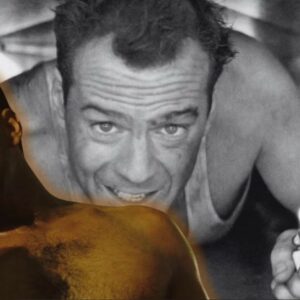Brad Pitt’s journey through Hollywood is a story of resilience, transformation, and triumph. From his early struggles to becoming one of the most recognized and respected actors of his generation, Pitt’s career is a testament to his ability to overcome the many challenges that come with fame and the entertainment industry.
Early Struggles and Breakthrough
Born in Shawnee, Oklahoma, on December 18, 1963, Brad Pitt grew up in Springfield, Missouri. His early life was marked by a strong sense of ambition and an eagerness to escape the constraints of his small-town upbringing. Pitt’s father, William Alvin Pitt, was a trucking company owner, while his mother, Jane Etta, was a school counselor. Despite the supportive environment provided by his parents, Pitt’s desire to make it big in Hollywood was not an easy path.
After graduating from the University of Missouri with a degree in Journalism and Advertising, Pitt moved to Los Angeles to pursue his dream of becoming an actor. His initial foray into Hollywood was characterized by a series of modest and often unremarkable roles. He found himself taking on small parts in television shows such as Dallas, 21 Jump Street, and Growing Pains. These roles were pivotal in shaping his early career, but they did not bring him the recognition he sought.
Pitt’s breakthrough came in 1991 with his role in Thelma & Louise. Playing the charming drifter J.D., Pitt caught the attention of audiences and critics alike. The film’s success was a turning point for Pitt, showcasing his charisma and talent on a broader scale. This role not only provided him with significant exposure but also demonstrated his ability to bring depth and complexity to his characters.
Navigating Fame and Typecasting
Following the success of Thelma & Louise, Pitt was thrust into the spotlight, and with it came the challenges of fame and typecasting. Hollywood’s tendency to pigeonhole actors into specific roles based on their initial success can be a significant obstacle, and Pitt was no exception. He found himself frequently cast as the “pretty boy” or romantic lead, a typecasting that could have limited his career if not for his determination and versatility.
Pitt’s struggle with typecasting was evident in the mid-1990s, despite his continued success with films like A River Runs Through It (1992) and Legends of the Fall (1994). These roles reinforced his status as a leading man but also risked confining him to a narrow range of characters. Pitt recognized the need to diversify his acting portfolio to avoid being typecast, and he began to seek out more complex and challenging roles.
Breaking Free: Diverse Roles and Critical Acclaim
In the late 1990s and early 2000s, Pitt made a concerted effort to break free from his established image. He took on roles that showcased his range and ability to tackle a variety of genres. One of his most notable performances during this period was in Fight Club (1999), directed by David Fincher. In this film, Pitt played Tyler Durden, a character that was a significant departure from his previous roles. The film, though initially polarizing, eventually became a cult classic and demonstrated Pitt’s willingness to take risks and challenge himself as an actor.
Pitt continued to explore diverse roles with films like Snatch (2000) and Oceans Eleven (2001). His portrayal of the eccentric and fast-talking character in Snatch showcased his comedic timing and ability to inhabit characters outside of the typical leading man mold. The Ocean’s trilogy, beginning with Ocean’s Eleven, allowed Pitt to display his charisma and chemistry with an ensemble cast, further solidifying his status as a versatile and bankable star.
Personal Challenges and Public Scrutiny
As Pitt’s career continued to soar, he faced personal challenges that often played out in the public eye. His high-profile relationships and subsequent divorce from actress Jennifer Aniston in 2005, followed by his relationship with Angelina Jolie and their highly publicized split in 2016, brought a great deal of media scrutiny. The pressures of maintaining a public image, coupled with personal struggles, added another layer of difficulty to Pitt’s journey.
Despite the challenges, Pitt managed to maintain his focus on his career and personal growth. His ability to navigate the tumultuous waters of public scrutiny while continuing to deliver compelling performances is a testament to his resilience and professionalism.
Reinvention and New Horizons
In recent years, Brad Pitt has continued to reinvent himself, both as an actor and as a producer. His work with Plan B Entertainment, the production company he co-founded with Jennifer Aniston and Brad Grey, has seen the creation of critically acclaimed films such as 12 Years a Slave (2013) and Moonlight (2016). These films not only achieved commercial success but also garnered numerous awards, including the Academy Award for Best Picture.
Pitt’s involvement in producing these films reflects his desire to contribute to the industry beyond acting. His commitment to telling important and diverse stories has been a significant factor in his continued relevance and success in Hollywood.
The Legacy of Brad Pitt
Brad Pitt’s journey through Hollywood is marked by a series of challenges and triumphs that have shaped his career and legacy. From his early struggles to his rise as a leading man, and his subsequent efforts to diversify his roles and contribute to the industry as a producer, Pitt’s story is one of resilience, transformation, and perseverance.
His ability to navigate the complexities of fame, typecasting, and personal challenges has made him one of the most respected and enduring figures in Hollywood. Brad Pitt’s legacy is not only defined by his impressive filmography but also by his contributions to the industry and his ongoing efforts to push the boundaries of his craft.
As Brad Pitt continues to evolve and explore new opportunities, his journey serves as an inspiration to aspiring actors and creators alike. His story is a reminder that success in Hollywood is not just about talent but also about resilience, adaptability, and the willingness to face and overcome challenges.





